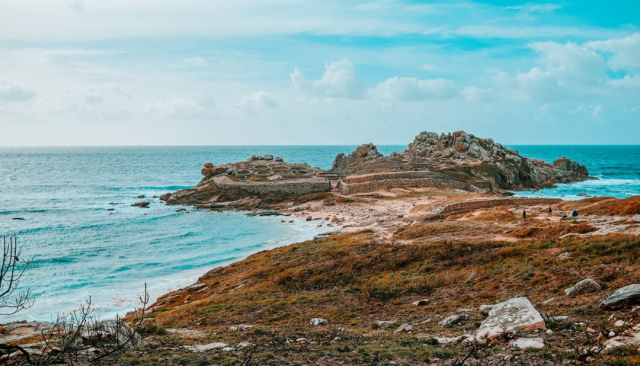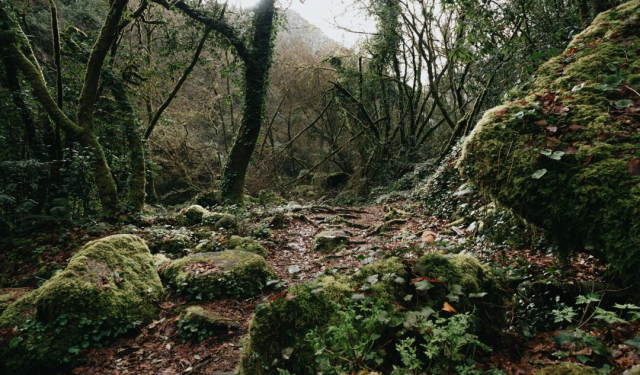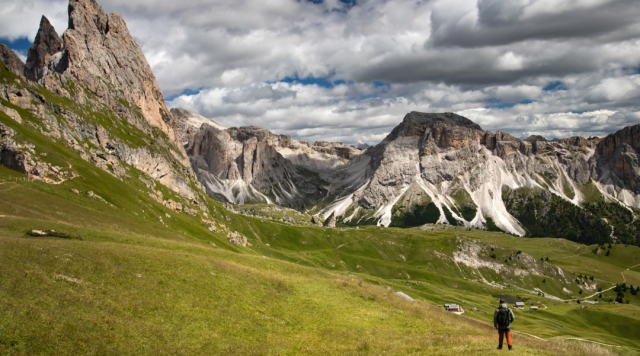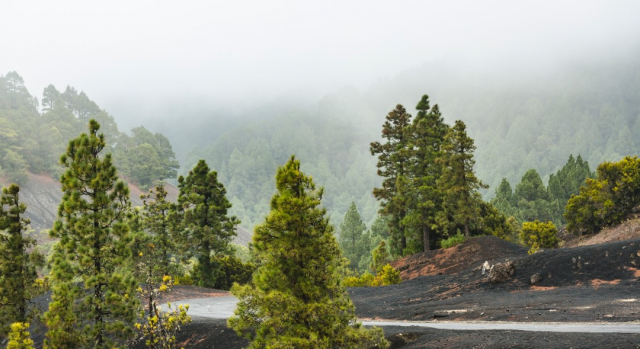What is the Camino de Santiago with the most nature?
If you want to enjoy the most natural facet of the Camino de Santiago, these are the routes that cannot be missing from your planning.
- Coastal routes on the Camino de Santiago
- Northern Path
- Portuguese Way along the Coast
- Forest and field routes on the Camino de Santiago
- French Way
- Primitive Path
- Mountainous routes on the Camino de Santiago
- The Lebaniego Way
- The interior Portuguese Way
- Routes with mixes of landscapes: mountains, coast and forest
- The Portuguese Way
- The Winter Road
The Camino de Santiago is a journey full of spiritual, cultural and personal meaning, which attracts thousands of pilgrims every year. This pilgrimage, with multiple routes, also becomes the perfect excuse to enjoy the most natural facet of our country, and others that include the Way of Santiago.
If you are one of those who enjoys immersing yourself in nature and exploring those routes that are distinguished by their rich presence of natural landscapes, at Vive Camino we have prepared a very special article for you. We will travel from sun-drenched coasts to lush forests, strolling along quiet beaches and majestic mountains, each path offering a unique window into the diversity of the landscape. We will focus on discovering which of these routes is the most abundant in nature, thus providing a guide for those pilgrims who seek to connect deeply with the environment while making their spiritual journey.
Coastal routes on the Camino de Santiago
The coastal routes of the Camino de Santiago offer a unique experience where the sea becomes a constant travel companion, giving pilgrims a different perspective of this ancient journey. Among these routes, the Northern Way and the Portuguese Coastal Way are two of the most notable.
Northern Path
Also known as the Camino de la Costa, it is a less traveled route than its more famous sister, the Camino Francés, but no less impressive. It extends along the northern coast of Spain, starting in Irun, near the French border, and winding along the Cantabrian coast. This route is a delight for the senses: the sound of the waves crashing against the cliffs, the saline smell of the sea and the panoramic views of the ocean accompany the pilgrims on their way. Through its stages, you pass through charming cities such as San Sebastián, Santander and Gijón, as well as such as small fishing villages and isolated beaches, ideal for reflecting and resting.
Portuguese Way along the Coast
On the other hand, the Portuguese Coastal Way begins in the charming city of Porto, in Portugal, and heads north along the Atlantic. This route combines the beauty of the Portuguese beaches with the greenery of the Galician landscapes, once the road crosses the border into Spain. It is a trip that captivates for its diversity: from the bustling streets of Porto, passing through quiet coastal villages and extensive dunes, until reaching the fusion of sea and land in coastal Galicia. In addition to its natural beauty, this route allows pilgrims to immerse themselves in a rich mix of cultures and traditions, tasting the exquisite maritime cuisine of both regions.
Both coastal routes, the Northern Way and the Portuguese Coastal Way, offer an unforgettable experience for those seeking the serene beauty of the coastline, combined with the spiritual and cultural depth of the Santiago's road. They are paths that invite introspection and offer moments of peace and connection with nature, while following the ancient pilgrimage route to Santiago de Compostela.
Forest and field routes on the Camino de Santiago
The routes of the Camino de Santiago that wind through forests and fields offer a unique experience, immersed in tranquility and natural beauty. Among these, certain parts of the French Way and the Primitive Way stand out for their richness in wooded landscapes and green fields.
French Way
The French Way, perhaps the best-known and most traveled route, traverses a diversity of natural landscapes, but it is its stretches through lush forests and fields that often capture the heart. of the pilgrims. One of the most emblematic examples is the passage through the region of Galicia. Here, the path enters magical forests, where moss covers ancient stones and trees form natural tunnels. These forests, often shrouded in gentle mist, seem straight out of a fairy tale, offering a space of serenity and contemplation. Furthermore, the green fields of Galicia, with its undulating landscape and small villages, provide a bucolic experience, connecting walkers with rural life and its traditions.
Primitive Path
On the other hand, the Camino Primitivo, which begins in Oviedo and is considered the oldest route, is a gem for nature lovers. This path crosses the mountains of Asturias, offering spectacular views and intimate contact with virgin nature. Along this route, pilgrims enter dense forests, cross meandering rivers, and walk along paths through meadows and fields. The beauty of the Primitive Way lies in its wild character and the feeling of being away from the hustle and bustle of the modern world. It is a path that challenges but, at the same time, rewards with its tranquility and its landscapes that invite reflection.
These routes, rich in forests and fields, are ideal for those pilgrims seeking an experience of deep connection with nature. Walking along these paths is a journey through time, where each step brings us closer to ourselves and the natural world that surrounds us, keeping alive the essence of the pilgrimage on the Camino de Santiago.
Mountainous routes on the Camino de Santiago
If what you are looking for are mountain routes and delight in these imposing giants of nature, the Camino de Santiago also has a lot to offer in this regard. Of course, you should know that these are the most demanding routes, some of them called by veteran pilgrims as "the leg-breaking routes".
The Lebaniego Way
The Camino Lebaniego may not be is or belongs as such to the Camino de Santiago; but in it we also find pilgrims and even its own credentials. On this occasion and following the red arrows instead of the yellow ones, the Camino Lebaniego will take us to You will go through a whole series of stages in which the mountains will become, without any doubt, the main protagonists and with very demanding levels of difficulty from the beginning. Of course, the effort will be worth it. It's worth it, because the Camino Lebaniego takes us along some of the most impressive trails in all of northern Spain.
The interior Portuguese Way
The Interior Portuguese Way begins in the city of Ourense, in Spain, and heads north, crossing the border with Portugal. This route is less traveled compared to its coastal counterpart, providing a more peaceful and meditative experience. Along the way, pilgrims encounter a surprising variety of landscapes: from the vineyards and fields of the Douro region in Portugal, through small villages and lush forests, until they reach to the hills and rivers of Galicia. This path is a fusion of culture, nature and heritage, where each stage reveals a different facet of the Iberian landscape.
Routes with mixes of landscapes: mountains, coast and forest
The routes of the Camino de Santiago that offer a mix of landscapes are perfect for pilgrims looking for a diverse and complete experience. Among these, the Interior Portuguese Way and the Winter Way stand out for their variety of natural environments.
The Portuguese Way
The Interior Portuguese Way is a less known route but incredibly rich in varied landscapes. It begins in the vibrant city of Ourense, in Spain, and crosses the border into Portugal. This route takes pilgrims on a journey through different landscapes: from the serene rivers and vineyards of the Douro region in Portugal to the green valleys and forests of Galicia. >. Along this route, pilgrims can enjoy both the tranquility of the countryside and the vitality of small cities and towns, offering a mix of cultural and natural experiences.
The Winter Road
On the other hand, the Camino de Invierno, an alternative to the Camino Francés during the winter months, begins in Ponferrada and winds through the south of Galicia. This route avoids the snow-capped mountains of O Cebreiro and instead offers a tour through river valleys, vineyards and forested areas. The Winter Trail is especially known for passing through the Ribeira Sacra, a region famous for its vineyard terraces and monastic wealth. Here, the landscapes change dramatically, from mountains and forests to the banks of the Sil River, providing a visually stunning and diverse experience.
Routes
Blog
 How to get to Sarria to do the Camino de Santiago
How to get to Sarria to do the Camino de Santiago
 Descubre la magia del Camino de Santiago Portugués por la costa
Descubre la magia del Camino de Santiago Portugués por la costa
 5 tours culturales que puedes hacer en Galicia si decides hacer un alto en el camino
5 tours culturales que puedes hacer en Galicia si decides hacer un alto en el camino
 Doing the Camino de Santiago in June: What you should know?
Doing the Camino de Santiago in June: What you should know?
Information
Points of interest
Cities & Towns | Hostels | Lodgings | Restaurants | Saddlery | Doctors | Points of interest | Bikes workshop
Contact us | Privacy policy | Cookies policy | | Terms of use | Authorship | Web Map | Consentimiento
© Copyright LA VOZ DE GALICIA S.A. Polígono de Sabón, Arteixo, A CORUÑA (ESPAÑA) Inscrita en el Registro Mercantil de A Coruña en el Tomo 2438 del Archivo, Sección General, a los folios 91 y siguientes, hoja C-2141. CIF: A-15000649
Developed and managed byHyliacom



